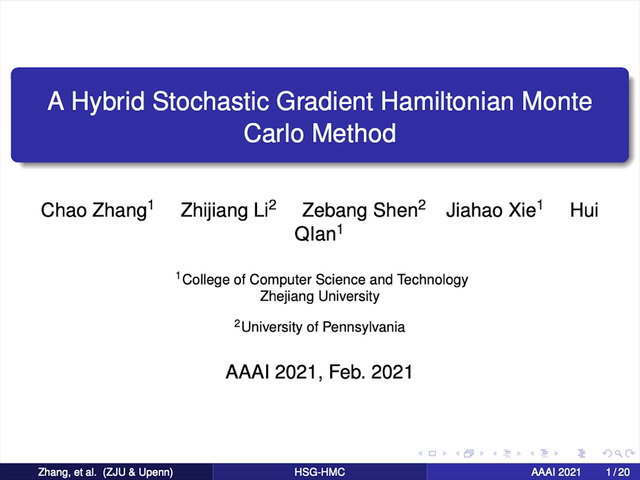Abstract:
We study identity testing for restricted Boltzmann machines (RBMs), and more generally for undirected graphical models. Given sample access to the Gibbs distribution corresponding to an unknown/hidden model $M^*$ and given an explicit model $M$, can we distinguish if either $M = M^*$ or if they are (statistically) far apart? Daskalakis et al. (2018) presented a polynomial-time algorithm for identity testing for the ferromagnetic (attractive) Ising model. In contrast, for the antiferromagnetic (repulsive) Ising model, Bezakova et al. (2019) proved that unless $NP=RP$ there is no identity testing algorithm when $d \beta=\omega(\log{n})$, where $d$ is the maximum degree of the visible graph and $\beta$ is the largest edge weight (in absolute value).\n\nWe prove analogous hardness results for RBMs (i.e., mixed Ising models on bipartite graphs), even when there are no latent variables or an external field. Specifically, we show that if $RP \neq NP$, then when $d \beta=\omega(\log n)$ there is no polynomial-time algorithm for identity testing for RBMs; when $d \beta =O(\log n)$ there is an efficient\nidentity testing algorithm that utilizes the structure learning algorithm of Klivans and Meka (2017). In addition, we prove similar lower bounds for purely ferromagnetic RBMs with inconsistent external fields, and for the ferromagnetic Potts model. Previous hardness results for identity testing of Bezakova et al. (2019) utilized the hardness of finding the maximum cuts, which corresponds to the ground states of the antiferromagnetic Ising model. Since RBMs are on bipartite graphs such an approach is not feasible. We instead introduce a novel methodology to reduce from the corresponding approximate counting problem and utilize the phase transition that is exhibited by RBMs and the mean-field Potts model. We believe that our method is general and that it can be used to establish the hardness of identity testing for other graphical models.









































